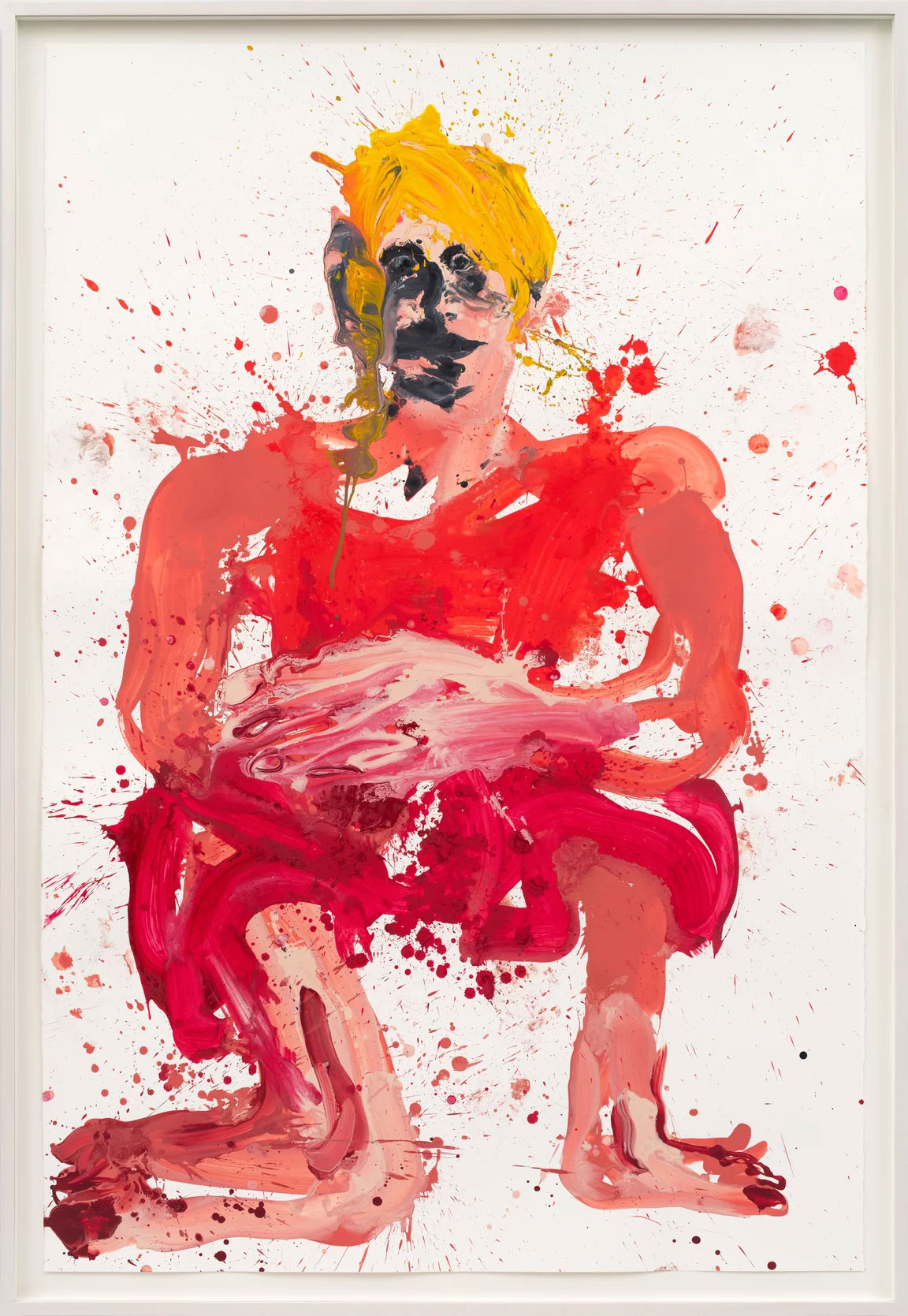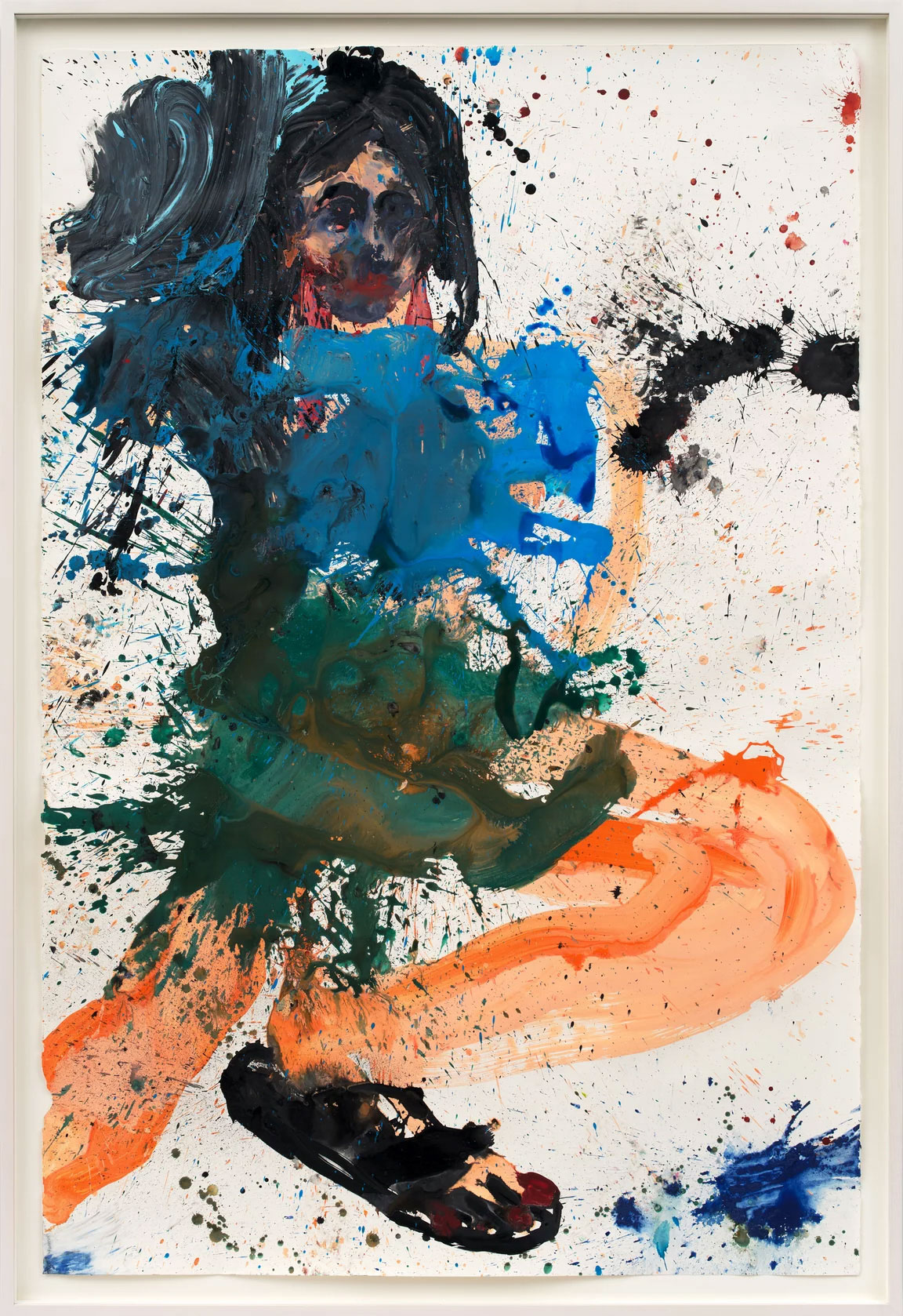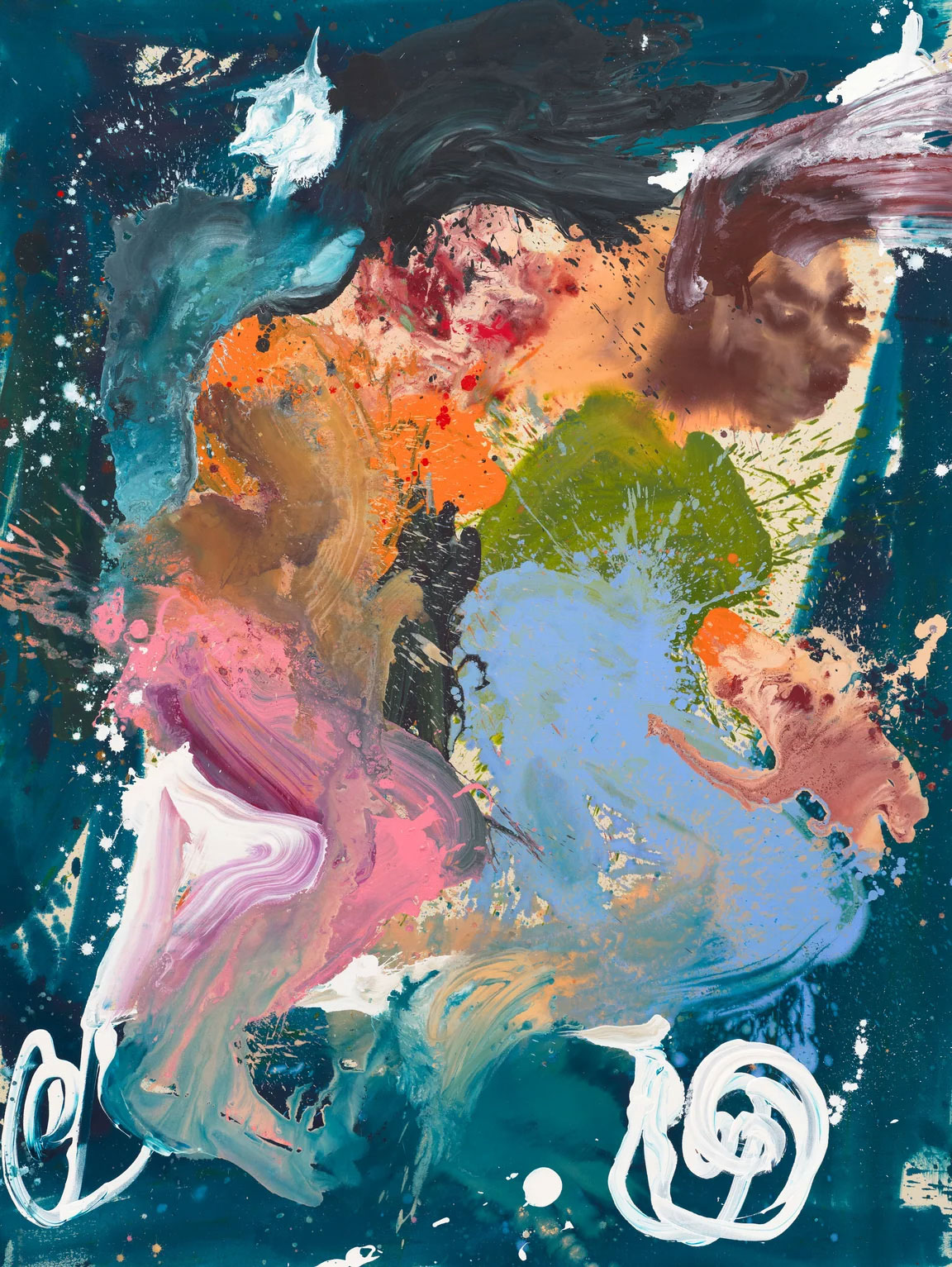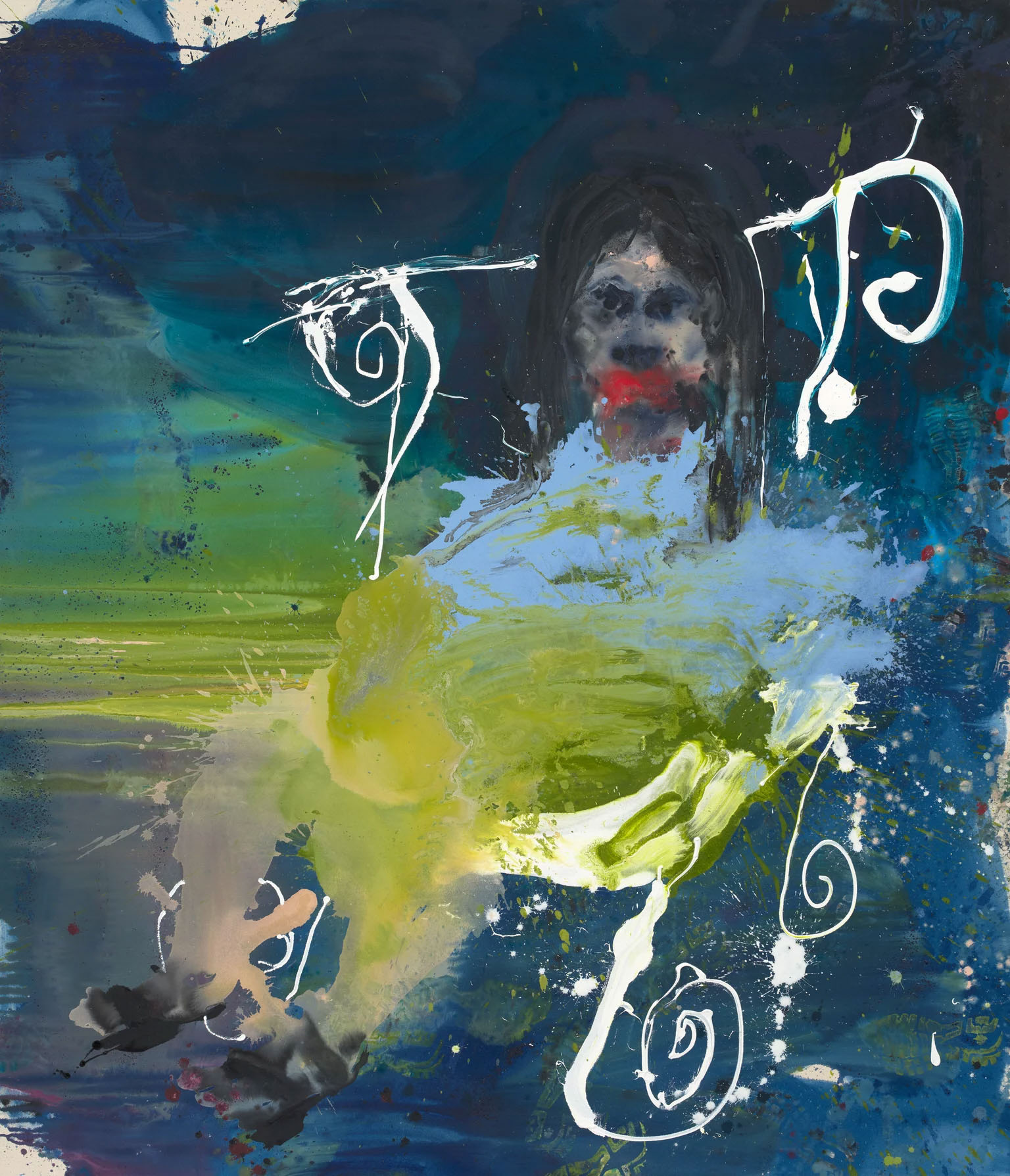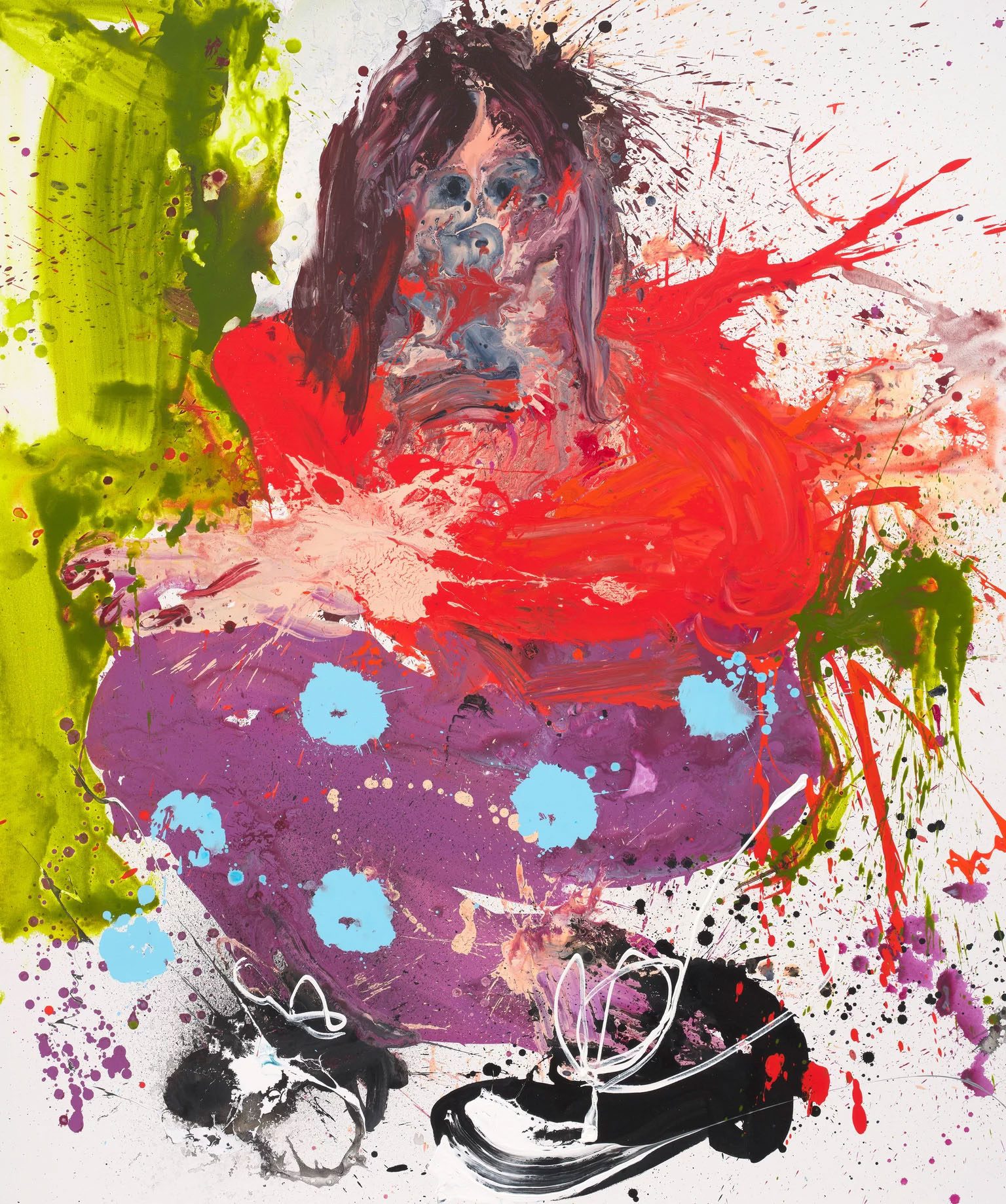It’s okay to stop and stare, mouth open, gaping in wonder; it’s not very often you come across painterly feats so thrilling and risky, intemperately precarious and audacious, dancing so close to failure without any discernible safety net. You may wonder how Cristina de Miguel does it, and she won’t mind telling you because she is deeply invested in process, but even knowing won’t dispel the frisson of mystery and magic, nor even the simple appreciation of something visceral and virtuosic at work.
Fun and friendly as her art is, it’s also uncanny, just different enough to perplex, accessible sure, but possessing of a certain effect and affect that, well, demands some explanation as to a how and why. To call it a trick or technique seems a poor choice of words because it implies a matter of control or determination too elusive for such a volatile medium, but the essence of her process is embodied in the fluidity of surface and form, a way of mixing paint, gesture and a half-drowning dose of water as she goes along. We might call it wet-on-wet, except that kind of “direct painting” on a wet surface is for oil paint, which allows a lot more control (in a casual Bob Ross kind of way) than the wild unpredictability Cristina de Miguel courts by using acrylics on a wet surface. Maybe we could call it wet work, partially ignoring how it’s a term typically used for murder and assassination. Her aesthetics are far more about glee than gore, for sure, but de Miguel’s highly emotive free-form distortions of the body offer their own dramatic anatomical interventions. Let’s think it’s somewhere between swimming and dissolving, the kind of bath that takes you out of yourself, the deceit of flowing water that seems calm, orderly or even still under the physics of force but is improvisatory and incalculable, a dynamic that can just as easily pull you under and sweep you away.
Why is always a more difficult question than how when it comes to the arts, at best approximate or adjacent to a truth that more or less lies between Bill Clinton’s explanation for cheating (“because I could”) and Edmund Hillary’s reason for trying to climb a mountain that in fact killed him (“because it is there”). The raison d’être for de Miguel’s art is all about doing what she wants and discovering what she does not know.
Comfortably into a postmodern mindset where we’re not always trying to discovery novelty, Cristina reminds us what it’s like to witness an intrepid explorer, to follow the act of getting lost just because you might find yourself somewhere new. Sure it’s about painting but it’s not an exploration of practice, it’s an invocation of feelings, a way of confronting all that uncertainty and anxiety we all share in a spirit where risk is balanced by trust, unknowing is a path to appreciation and the unbidden pursuit of what is joyful, playful and funny is as serious a challenge as life can offer. De Miguel, who seemingly has no fear, shot me a worried glance and said, “please don’t ask me what my art is about” to say of course that as a figurative painter she was in no way a narrative artist. You don’t need allegory, metaphor or any other type of tale to explain the mutability of experience, in fact telling a story is always a kind of lying, and somehow all that is so slippery in de Miguel’s pictorial poetics is far closer to the truth. —Carlo McCormick
Dissolving is on view at Almine Rech London

